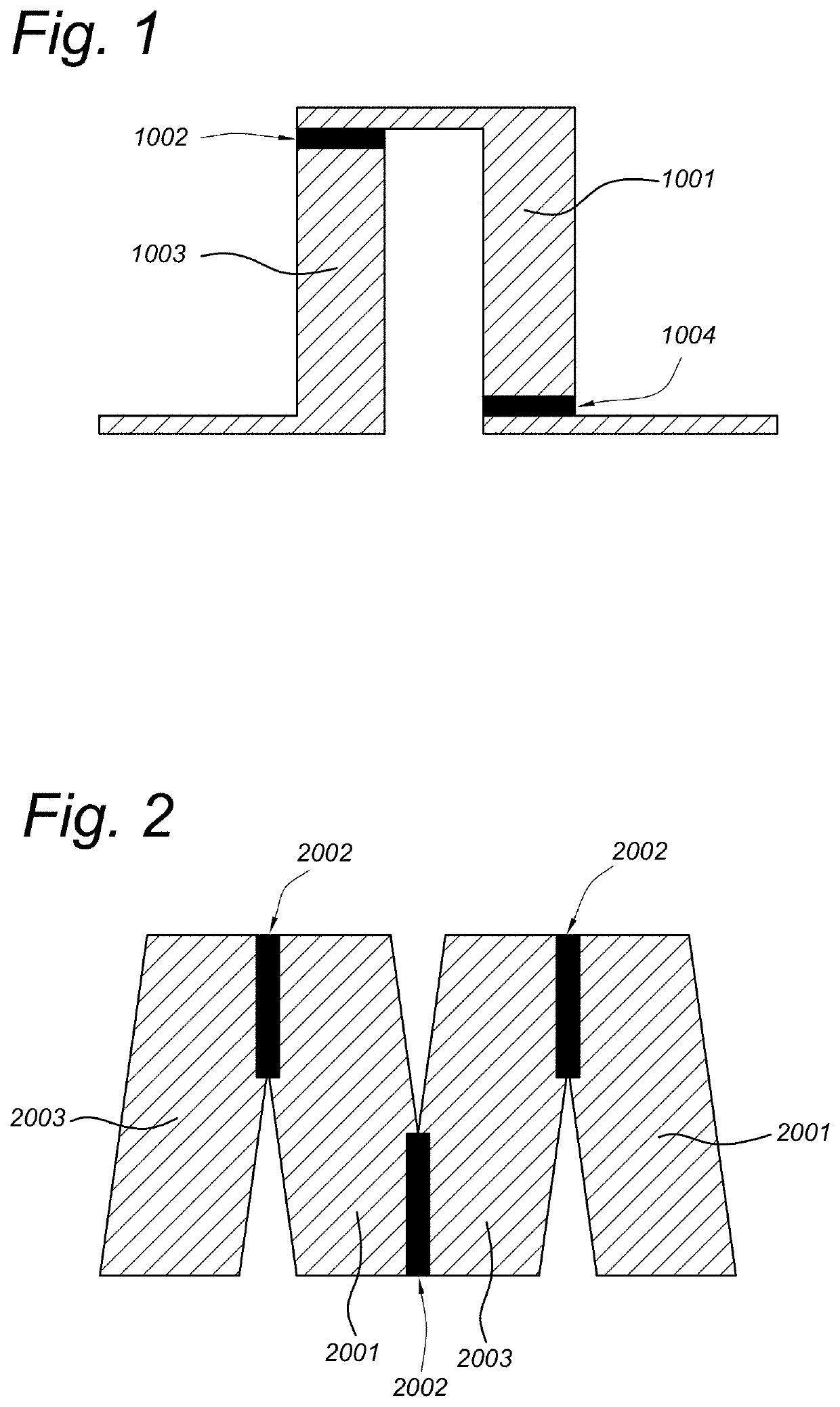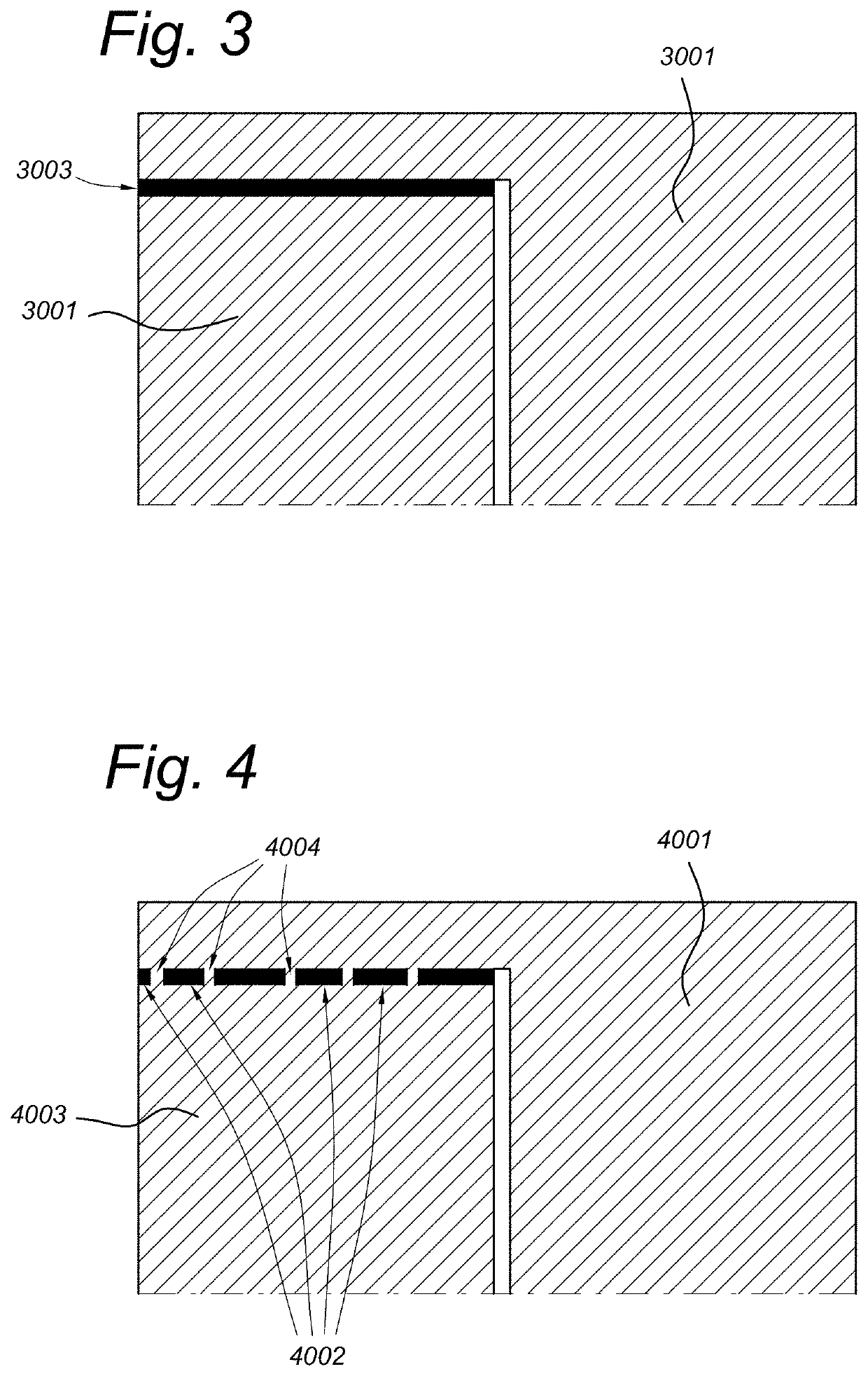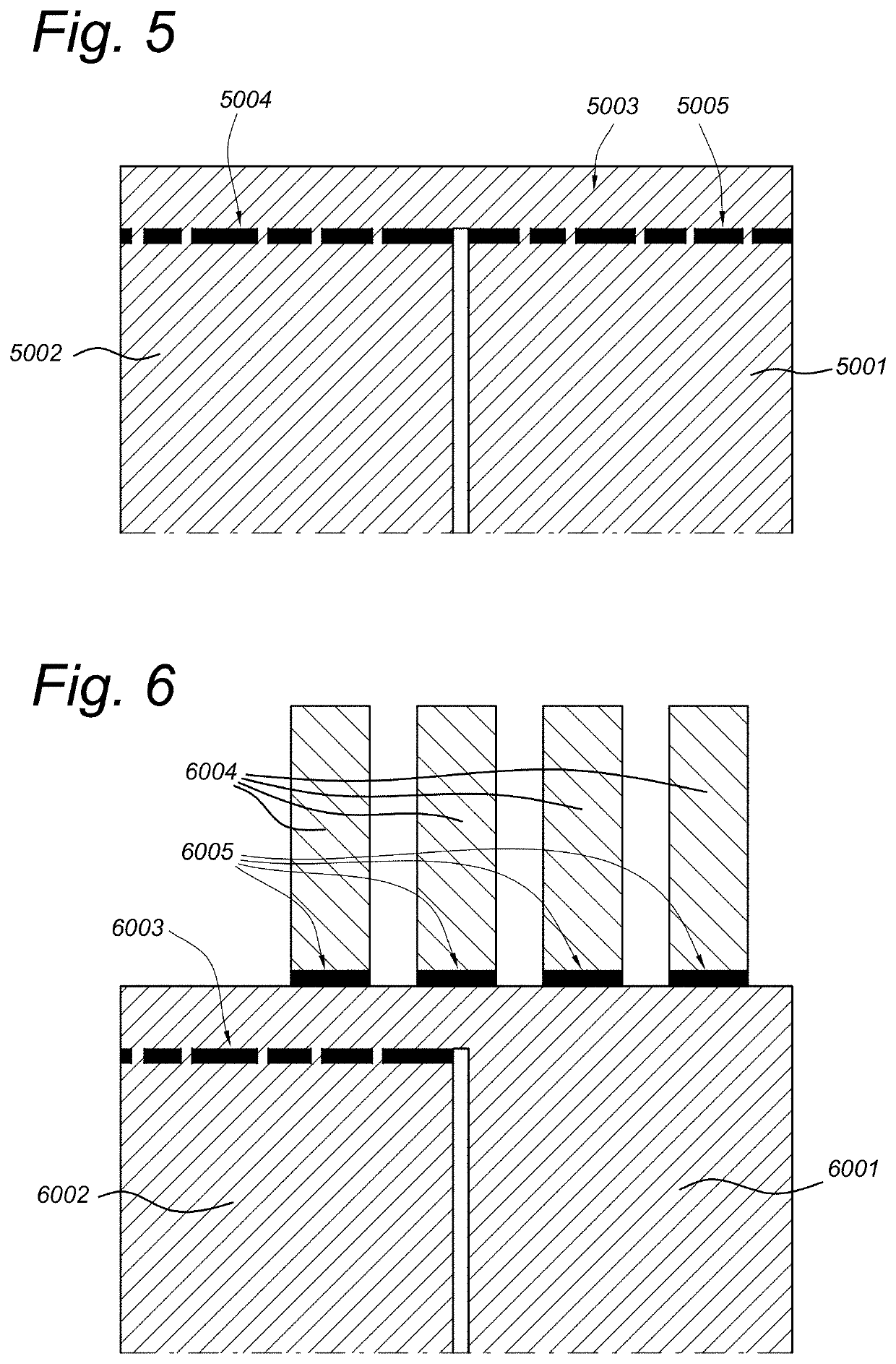Thermoelectric conversion device and method for manufacturing the same
a technology of conversion device and thermal conversion device, which is applied in the manufacture/treatment of thermoelectric device, thermoelectric device details, and thermoelectric device junction materials. it can solve the problems of inability to meet the technical requirements of direct silicon containing material-metal interconnection, inability to meet the technical requirements of electrically conductive interconnection, and inability to use materials. to achieve the effect of overcompensation or reducing the number o
- Summary
- Abstract
- Description
- Claims
- Application Information
AI Technical Summary
Benefits of technology
Problems solved by technology
Method used
Image
Examples
Embodiment Construction
[0040]FIG. 1 shows a cross-sectional view of a thermoelectric conversion device according to an embodiment of the present invention.
[0041]According to an embodiment, a thermoelectric conversion device comprises a plurality of thermoelectric elements 1001 and 1003, also denoted as “active elements”, from a silicon, silicon composites, silicon alloys or metal-silicide based material. Such thermoelectric elements may have a shape of a bar.
[0042]Each thermoelectric element 1001; 1003 comprises a contact interface to an interconnection zone 1002 and a second interconnection zone 1004; For example, these contact and counter interfaces are formed at the respective ends of the bar shape. During use of the thermoelectric element one contact interface (e.g., the first contact interface) is kept at a relatively high temperature, i.e., a hot side positioned in a zone with relatively high temperature and the other, first counter interface as cold side is kept at relatively low temperature, posit...
PUM
| Property | Measurement | Unit |
|---|---|---|
| thickness | aaaaa | aaaaa |
| thickness | aaaaa | aaaaa |
| operating temperatures | aaaaa | aaaaa |
Abstract
Description
Claims
Application Information
 Login to View More
Login to View More - R&D
- Intellectual Property
- Life Sciences
- Materials
- Tech Scout
- Unparalleled Data Quality
- Higher Quality Content
- 60% Fewer Hallucinations
Browse by: Latest US Patents, China's latest patents, Technical Efficacy Thesaurus, Application Domain, Technology Topic, Popular Technical Reports.
© 2025 PatSnap. All rights reserved.Legal|Privacy policy|Modern Slavery Act Transparency Statement|Sitemap|About US| Contact US: help@patsnap.com



